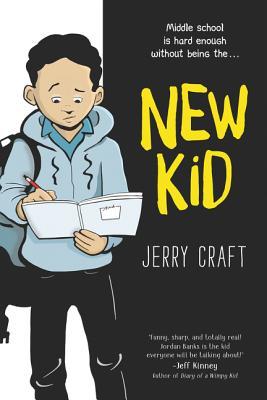New Kid and Not Talking About Race

This year, I was able to teach my identity literature circle for the first time. Having put together the text sets before going on parental leave, I was excited to finally dive into a unit that explored identity in a variety of ways. As a final addition, I included New Kid, by Jerry Craft, a Newbery award winning graphic novel about a seventh grader who becomes one of the few students of colour in a prestigious private school. The book covers a lot of ground when discussing racism, focusing on structural racism, microaggressions, stereotyping and prejudice. The main character Jordan Banks comes across as a realistic middle schooler and I knew my students would connect to this story.

Students did enjoy New Kid, snapping it up as soon as it was free of the quarantine book bin. However, due to COVID-19 safety restrictions, I soon ran into unanticipated complications. Normally, I would have daily small group discussions about our books, where I would sit down with a group and discuss the book in depth. This would give me the chance to model discussion strategies, assess their understandings and prod students to think more deeply about their reading and the central themes. Because we can't move around the room and sit together this year, we missed out on an important step in our literature circle unit.
The absence of small group discussions had significant consequences for students reading New Kid. Rather than being prompted to discuss the examples of racism in the book and how this impacted Jordan's identity at his new school, students engaged with the book at a surface level. In their book responses, they made connections about what it is like to be a new kid, but skirted around the issues of racism in the text. Students expressed concern that it would be rude to call him Black. I corrected this misconception, but couldn't coax students to write about how Jordan's racial identity impacted his experience at his new school.
New Kid is an excellent book and a useful tool for exploring how race impacts identity and the way a person experiences the world. However, putting the book in front of students and expecting them to independently make the connections and grapple with these ideas is not enough. Race and racism are topics that make white people uncomfortable. Many white students (and adults) avoid discussing race given the chance or only focus on basic examples of individual racism, while ignoring wider systems of oppression. My role as a teacher is to encourage students to think more critically and to reconsider what might make them uncomfortable.
This experience has reinforced the importance of directly teaching about racism, modeling tough discussions, and asking critical and thought provoking questions. While modelling these skills in a small group setting is largely out of reach at the moment, I know to address these topics more directly with my whole group going forward.
